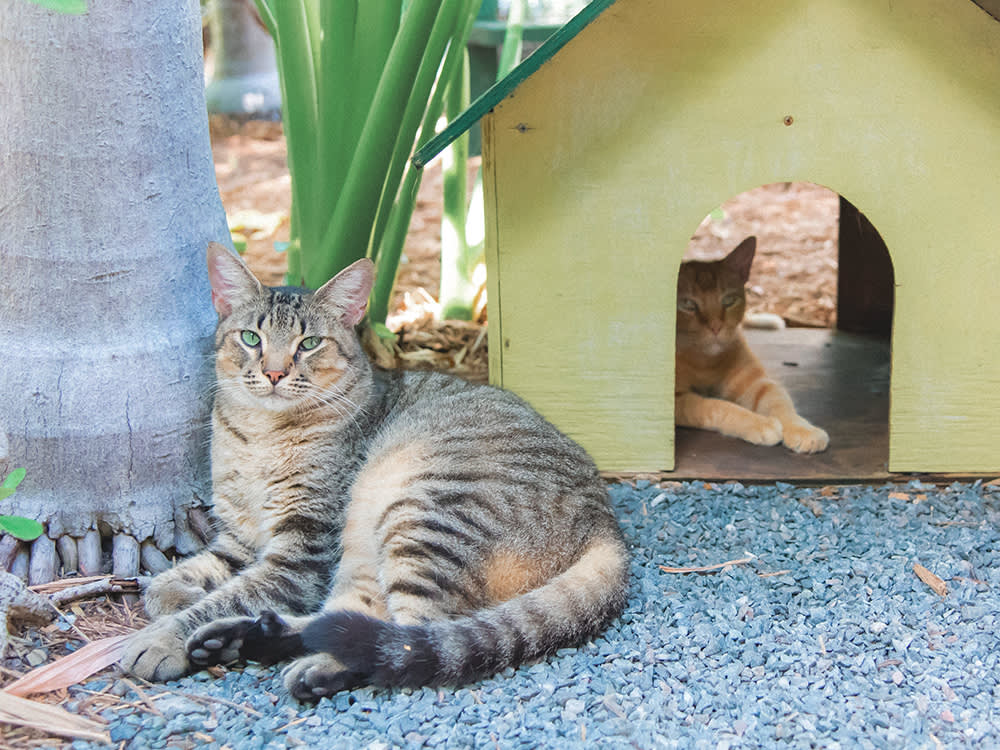6 Facts About Polydactyl Cats
What makes the fabled ‘Hemingway cats’ so special.

Share Article
Everyone knows that the beans (the fleshy pads of the paws) are the cutest and most alluring part of the cat. Attempting to massage the beans when one is not blessed and highly favored by the cat is risky at best, as the beans are connected to the claws, which are designed to fuck your shit up. And yet, the temptation to touch the beans of any cat is almost irresistible, especially in the case of a polydactyl cat, which has extra beans and thus beckons cat people as the sirens did Odysseus. Here’s what you need to know about them.
1. A polydactyl cat can have up to nine digits on each paw.
So many beans! Most cats have five toes on each front paw and four on each back paw, for a total of 18, but polydactyl cats can have up to four extra toes on one or all of their paws (the beans are not necessarily symmetrical). The record is 28 total, but that is not common.
2. Any breed can be polydactyl.
Extra toes are caused by a recessive gene scientifically named Sonic Hedgehog (yes, like the video-game character) that can pop up in any litter under the right circumstances. However, overbreeding for this trait can cause paw deformations that can be painful to cats.
3. There are no major health risks associated with polydactylism.
Polydactyl paws do need to be monitored and their nails trimmed regularly, as their claws can sometimes loop around on themselves, piercing the precious beans.

4. They are often called ‘Hemingway cats’ after author Earnest Hemingway.
Hemingway — who lived in Key West in the 1930s — was given his first polydactyl cat, named Snow White, as a gift from his friend, Captain Harold Stanley Dexter. “One cat just leads to another,” he once wrote. To this day, the Hemingway Home and Museum in Key Westopens in new tab cares for the descendants of Snow White and Hemingway’s other cats, all named after icons from Billie Holiday to Bugsy Siegel. “We have about 60 cats right now, half of which are polydactyl,” says the museum’s director of public relations, Alexa Morgan. The cats are given free reign over the house and one-acre property, which is surrounded by a high brick wall. “People always want to adopt or buy our cats, but they are not for sale.”
5. Polydactyl cats are most common in the UK and North American east coast, thanks to nautical folklore.
In mainland Europe, polydactyl cats were once associated with witches and killed, but British sailors considered these ‘gypsy cats’ good luck and brought them onboard their ships as mousers, thus spreading them along the Eastern seaboard where their ships docked. The cats did well on ships, as their larger paws made it easier for them to balance on rocky seas and their extra claws made them fantastic hunters. Key West was a major port and, being a small island, offered few predators for the cats, which are now common in the area. This idea that they were good luck also appealed to Hemingway, who, according to Morgan, “was accident-prone and figured he could use all the good luck he could get.”
6. Polydactyl cats can be found in shelters across the country.
The bean-obsessed need not turn to breeders. Just call around to your local shelters.

Charles Manning
Charles Manning is an actor and writer based in New York City. In his free time he likes to cook, go swimming at the public pool, volunteer at the LGBTQ senior center, and foster senior and special-needs cats. His work has previously appeared in Cosmopolitan, Elle, Marie Claire, Harper’s Bazaar, Seventeen, and Nylon.